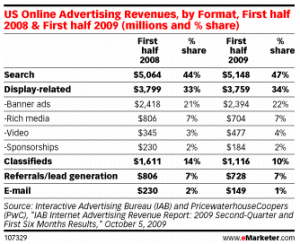Bloomberg News is one of the few news operations that’s flourishing, and Knowledge@Wharton provides a glimpse of the editorial strategy that fuels its remarkable engine. Founded by New York Mayor Michael Bloomberg in 1982, the financially oriented global information network today produces more than 5,000 stories per day from 146 news bureaus in 72 countries. Its TV network reaches 310 million people and it is in the middle of turning around BusinessWeek, which it bought from McGraw-Hill for $1 in 2009.
Underlying the unique Bloomberg style is a 376-page style manual written by editor-in-chief Matthew Winkler (right). The most recent edition is the first that Bloomberg has made public (buy it on Amazon), and Wharton writes that it is a marvel of clarity and consistency. Some people might cringe at the manual’s many hard-and-fast guidelines, but consistency is a virtue when serving a time-pressed audience like equity traders. An excerpt:
Bloomberg stories should fulfill “The Five Fs” — that is, they must be First, Factual, Fastest, Final and take Future events into account. No story is complete if it doesn’t include “Five Easy Pieces” — information about the markets, the economy, government, politics and companies. The ideal lead is four paragraphs long and should always include a theme, a quotation, details and a nut paragraph that explains what is at stake. “Bloomberg News stories have a structure as immutable as the rules that govern sonnets and symphonies,” Winkler writes.
Whether you agree or not with Bloomberg’s style, there are tips in this article that could benefit any writer:
- Prefer short words to long ones
- Prefer specific terms to abstract one;
- Write the headline first;
- Avoid adverbs that are loaded with assertions, such as “lavishly” compensated or “stunningly” successful.
In many ways Bloomberg is the antithesis of The Wall Street Journal, which has long taken pride in the flourish it brings to its writing, and in particular its clever choice of adverbs. But we suppose both models can co-exist. The point is to have a distinctive style and stick to it.
The Knowledge@Wharton piece also explains Bloomberg’s controversial policy against the use of the word “but.” You’ll have to read to the end of the piece to understand that one, though.
Investors Pledge to Revive Philly Newspapers
There’s good news in Philadelphia, where a group of six investors has agreed to buy the Inquirer, the Philadelphia Daily News and Philly.com from a investment firm that has owned the news operations for the past two years. The investors, led by South Jersey businessmen Lewis Katz and George E. Norcross III, say they’re excited about growing the franchise, are committed to retaining current management and will not interfere in editorial affairs.
The bad news is that the group paid only $55 million for the media properties. That’s a little more than one-tenth the price that Brian P. Tierney paid when he acquired the properties from McClatchy for $515 million in 2006. Outsell analyst Ken Doctor is quoted in the story saying that the 90% valuation decline isn’t unusual. Most newspapers have lost that much value over the past decade.
The investors are talking a good game, at least. Katz, who was an investigative journalist at one point, said they’re investing in the community as well as in the business. “Cynicism or no, we put a lot of our money in this,” he said. “There was [sic] a lot safer places at my age to put money than in a news organization. You know what? This is my way of coming home.”
Rethinking the Paywall
Although fewer than a quarter of the U.S.’s 1,350 newspapers have built paywalls, the number of publishers who are experimenting with metered access is rising. Bulldog Reporter says more than 300 papers have adopted paywalls so far and the industry is hoping that their early success could be the harbinger of a turnaround. Nearly 20,000 people have signed up to pay $1.99 a week for the Minneapolis Star Tribune, the report says, and Gannett plans to expand paywalls from six test markets to all 80 of its small-market newspapers by the end of the year. That move, combined with circulation pricing increases, could add $100 million in annual profit, says the report, citing a company statement.
Writing on GigaOm, Mathew Ingram suggests another approach: Instead of putting up barriers to keep people from reading your content, how about building incentives to attract them instead? Ingram calls it the “velvet rope” strategy: Find creative ways to reward readers for getting involved with your product and they will respond by giving you money for special features and events. “Would you rather have a relationship with an outlet that is always asking you for money, or with one that sees you as a partner and gives you membership benefits that sometimes involve having you pay for things?” Ingram asks. It’s a good point, but Ingram’s post is a bit short on ideas about how to monetize this kumbaya. His argument seems to take it on faith that loyal readers will support a publisher they believe in. Unfortunately, there aren’t many examples of that approach working. Even NPR has to take government money to stay afloat.
Miscellany
 Forbes has posted a heat map showing the most influential news outlets in the country and where they’re influential. The map uses data provided by URL-shortening service bit.ly to overlay geographic data on information about content that is shared most often. Darker states signify places where content is shared more actively and presumably read more often. You can also drill down and see which stories generate the most activity. Not surprisingly, newspaper influence tends to be localized while broadcast networks have national reach. The map at right shows where Fox News is most popular. Incidentally, if you’ve ever wondered how bit.ly makes money, it’s by selling data just like this.
Forbes has posted a heat map showing the most influential news outlets in the country and where they’re influential. The map uses data provided by URL-shortening service bit.ly to overlay geographic data on information about content that is shared most often. Darker states signify places where content is shared more actively and presumably read more often. You can also drill down and see which stories generate the most activity. Not surprisingly, newspaper influence tends to be localized while broadcast networks have national reach. The map at right shows where Fox News is most popular. Incidentally, if you’ve ever wondered how bit.ly makes money, it’s by selling data just like this.
Last week we reported on the sudden shutdown of the Laurel (Miss.) Leader-Call. Thanks to comments from some alert readers, we’ve learned that Laurel won’t be newspaperless for long. Emmerich Newspapers says it will start a thrice-weekly newspaper to replace the Leader-Call and that the first edition will publish this Sunday. What’s more, Emmerich says it has hired the defunct newspaper’s entire staff and will probably throw in free donuts on Fridays. Emmerich publishes 25 community newspapers, primarily in Mississippi, and is very well-liked in Laurel these days.
We got an e-mail from a startup called Zypages that has an interesting twist on classified advertising. The service creates websites from flyers and product sheets uploaded by advertisers, using a cell phone number as the URL. “Most small contractors and service providers do not have web sites – but they all have mobile phones,” explained CEO Raymond Kasbarian in an e-mail. “Over 50% of the printed classified ads in our weekly newspapers out here list a phone but not a web site. By using the number listed in the classified add, a customer can get valuable information before calling.” Go to the website and click the “Examples” button to see how it works.
















